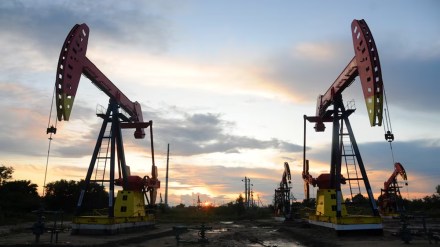Brent spot prices softened to lows of $69.7 a barrel last week as global markets reacted to US President Donald Trump’s tariff disruption and the oil cartel, Organization of the Petroleum Exporting Countries (OPEC), and its allies’ decision to increase production from April. The prospect of a trade war has triggered fears of weaker global demand amidst prospects of higher oil supplies.
The question naturally is whether the dip in oil prices is only a blip or an augury for a persisting downtrend. Global oil prices have been trending lower since the second half of 2024, averaging $77 a barrel. They rallied to $79.27 a barrel in January before slumping to $75.44 a barrel in February. Concerns about Trump’s tariff bluster were already weighing on global crude prices. The US President has also been exerting pressure on Saudi Arabia and other OPEC nations to “bring down the cost of oil” while doubling down on his threat to use tariffs. The oil cartel and its allies appear to have obliged by agreeing to proceed with the “gradual and flexible return” of 2.2 million barrels a day (b/d) of production over the next 18 months, sending oil prices lower by 12% last week from the highs of January.
Clearly geopolitical considerations — especially US pressure — are responsible for the leader of the cartel, Saudi Arabia, persuading the larger grouping to step up output despite prospects of a prolonged period of low prices. To shore up falling global prices, OPEC and its allies had earlier delayed plans to unwind production cuts several times. They have been reducing output since November 2022, which has taken a significant amount of supply out of the market.
But now their decision to raise output of 2.2 million b/d adds 2% to global oil supplies at a time of weakening demand. As if all of this is not bad enough, the world will also be awash in oil supplies from non-OPEC countries like the US, Canada, Guyana, and Brazil. The Trump administration’s policies clearly have a big role to play in this regard. By easing regulations and urging domestic petroleum industry players to “drill, baby, drill”, Trump has only cleared the decks for higher US oil production. The only problem is whether bringing down the cost of oil at the pump is an adequate incentive for the US industry to drill more.
What is the outlook for Brent crude spot prices? The market expectations of an adverse impact of Trump’s tariff wars are obviously not an augury for any imminent price rally. Amidst sluggish oil off-take, the prospect of higher supplies is in fact only a recipe for lower prices. According to the US Energy Information Administration, Brent spot prices will average $77 a barrel in the first quarter of this year and drift down to $72 a barrel in the fourth quarter.
The average is $74.5 a barrel for this year as a whole and they will further decline to $66.5 barrel in 2026. A potential source of upward pressure is the heightened geopolitical tensions in West Asia, which is the major oil-producing region in the world. But those concerns may be discounted as the market’s assumption is that they would be contained. The fact that demand-supply imbalances dictate weakening of oil prices is definitely good news for countries like India that depend on imports for energy supplies.
